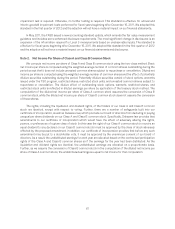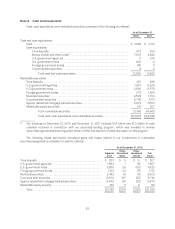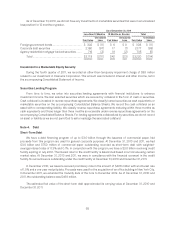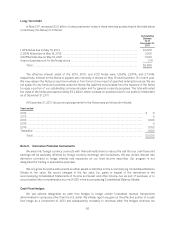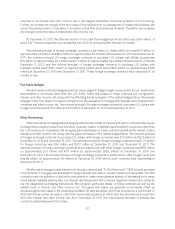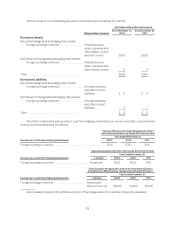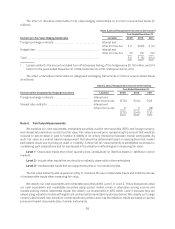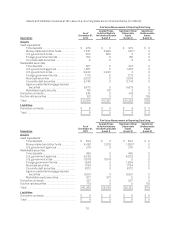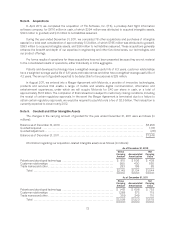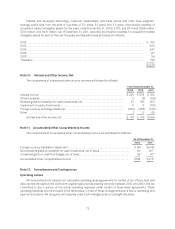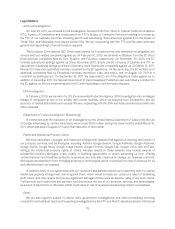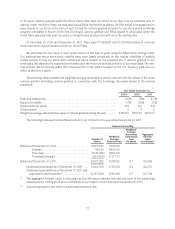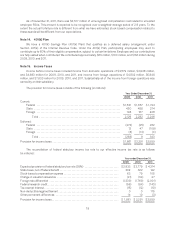Google 2011 Annual Report Download - page 98
Download and view the complete annual report
Please find page 98 of the 2011 Google annual report below. You can navigate through the pages in the report by either clicking on the pages listed below, or by using the keyword search tool below to find specific information within the annual report.
The effect of derivative instruments in fair value hedging relationships on income is summarized below (in
millions):
Gains (Losses) Recognized in Income on Derivatives(2)
Year Ended December 31,
Derivatives in Fair Value Hedging Relationship Location 2009 2010 2011
Foreign exchange contracts .................................. Interest and
other income, net $ 2 $(35) $ (2)
Hedged item ................................................ Interest and
other income, net (2) 29 (12)
Total ....................................................... $0 $ (6) $(14)
2Losses related to the amount excluded from effectiveness testing of the hedges were $0, $6 million, and $14
million for the years ended December 31, 2009, December 31, 2010, and December 31, 2011.
The effect of derivative instruments not designated as hedging instruments on income is summarized below
(in millions):
Gains (Losses) Recognized in Income on Derivatives
Year Ended December 31,
Derivatives Not Designated As Hedging Instruments Location 2009 2010 2011
Foreign exchange contracts ............................ Interest and
other income, net $(78) $(40) $29
Interest rate contracts ................................. Interest and
other income, net 0 0 (19)
$(78) $(40) $ 10
Note 6. Fair Value Measurements
We measure our cash equivalents, marketable securities, auction rate securities (ARS), and foreign currency
and interest rate derivative contracts at fair value. Fair value is an exit price, representing the amount that would be
received to sell an asset or paid to transfer a liability in an orderly transaction between market participants. As
such, fair value is a market-based measurement that should be determined based on assumptions that market
participants would use in pricing an asset or a liability. A three-tier fair value hierarchy is established as a basis for
considering such assumptions and for inputs used in the valuation methodologies in measuring fair value:
Level 1—Observable inputs that reflect quoted prices (unadjusted) for identical assets or liabilities in active
markets.
Level 2—Include other inputs that are directly or indirectly observable in the marketplace.
Level 3—Unobservable inputs that are supported by little or no market activities.
The fair value hierarchy also requires an entity to maximize the use of observable inputs and minimize the use
of unobservable inputs when measuring fair value.
We classify our cash equivalents and marketable securities within Level 1 or Level 2. This is because we value
our cash equivalents and marketable securities using quoted market prices or alternative pricing sources and
models utilizing market observable inputs. We classify our investments in ARS within Level 3 because they are
valued using valuation models with significant unobservable marketable inputs (see below). We classify our foreign
currency and interest rate derivative contracts primarily within Level 2 as the valuation inputs are based on quoted
prices and market observable data of similar instruments.
69




